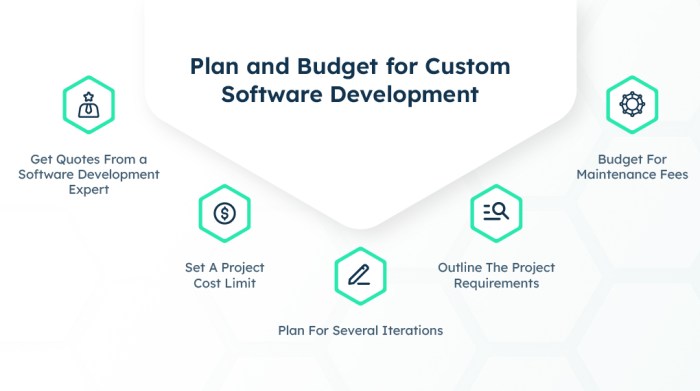In today’s rapidly evolving digital landscape, businesses of all sizes recognize the critical role of custom software in achieving a competitive edge. However, the decision of where to develop this software is a crucial one, balancing cost, quality, and proximity. Nearshore custom software development offers a compelling solution, bridging the gap between the cost-effectiveness of offshore development and the ease of collaboration inherent in onshore solutions.
This comprehensive guide will delve into the intricacies of nearshore development, providing you with the knowledge to make an informed decision for your business needs.

Source: decode.agency
Understanding Nearshore Software Development
Nearshore software development refers to outsourcing software development to a country geographically close to your own. Unlike offshore development, which involves outsourcing to countries across continents (e.g., India, China), nearshore outsourcing focuses on neighboring nations or regions with similar time zones and cultural contexts. This proximity offers significant advantages in terms of communication, collaboration, and project management.
Benefits of Choosing Nearshore Development
- Reduced Time Zones Differences: Facilitates seamless communication and real-time collaboration, minimizing delays and misunderstandings.
- Improved Communication & Collaboration: Easier travel for in-person meetings and quicker response times to queries.
- Cultural Understanding: Shared cultural values and business practices often lead to better understanding and smoother project execution.
- Cost Savings: While not as drastically lower as offshore options, nearshore development still offers significant cost advantages compared to onshore development.
- Stronger Intellectual Property Protection: Proximity reduces concerns regarding intellectual property security.
- Easier Legal Compliance: Simpler legal processes and contract management compared to offshore locations.
- Access to Skilled Talent Pool: Many nearshore locations boast a large pool of skilled software developers.
Nearshore vs. Offshore vs. Onshore Development: A Comparison, Nearshore custom software development
Understanding the nuances between nearshore, offshore, and onshore development is crucial for making the right choice. Onshore development, while offering the greatest ease of collaboration, is often the most expensive. Offshore development, while significantly cheaper, can present challenges in communication, time zone differences, and cultural understanding. Nearshore development seeks to strike a balance, leveraging the cost advantages of outsourcing while minimizing the potential drawbacks.
| Feature | Nearshore | Offshore | Onshore |
|---|---|---|---|
| Cost | Moderate | Low | High |
| Time Zone Difference | Minimal | Significant | None |
| Communication | Excellent | Challenging | Excellent |
| Cultural Understanding | Good | Variable | Excellent |
| Travel | Easy | Difficult & Expensive | Easy |
Choosing the Right Nearshore Location
The selection of a nearshore location depends on several factors, including your specific needs, budget, and the type of software you’re developing. Popular nearshore destinations include:
- Mexico: Offers a large pool of English-speaking developers and relatively low costs.
- Latin America (e.g., Colombia, Argentina, Brazil): Boasts a growing tech sector with skilled developers and favorable cost structures.
- Canada: A high-quality option with skilled developers but at a higher cost than other nearshore locations.
- Eastern Europe (e.g., Poland, Ukraine): A growing hub for IT outsourcing, with skilled developers and relatively lower costs.
Factors to Consider When Selecting a Nearshore Partner
- Technical Expertise: Ensure the development team possesses the necessary skills and experience for your project.
- Communication Skills: Clear and effective communication is vital for successful project completion.
- Project Management Capabilities: Look for a partner with a proven track record of delivering projects on time and within budget.
- Security and Data Protection: Confirm the partner’s commitment to data security and compliance with relevant regulations.
- Company Culture and Values: Ensure a good fit between your company culture and that of your nearshore partner.
- Pricing and Contract Terms: Carefully review pricing models and contract terms to ensure transparency and fairness.
Technologies Used in Nearshore Custom Software Development
Nearshore development teams typically work with a wide range of technologies, depending on the client’s requirements. Some of the most common technologies include:
- Java: A robust and versatile programming language used for various applications.
- .NET: Microsoft’s framework for building applications and services.
- Python: A popular language for data science, machine learning, and web development.
- PHP: A widely used server-side scripting language for web development.
- JavaScript: Essential for front-end web development and increasingly used for back-end development.
- React, Angular, Vue.js: Popular JavaScript frameworks for building user interfaces.
- Cloud Technologies (AWS, Azure, GCP): Increasingly used for scalability and flexibility.
- Mobile Development (iOS, Android): Native and cross-platform development frameworks are common.
- Databases (SQL, NoSQL): Choosing the right database is crucial for data management.
Frequently Asked Questions (FAQ)
- Q: What are the biggest risks associated with nearshore development?
A: While risks are generally lower than with offshore development, potential challenges include communication breakdowns (even with close proximity), cultural differences impacting project management, and potential legal complexities if not properly addressed in contracts. - Q: How can I find a reliable nearshore development partner?
A: Thorough research is key. Look for companies with a strong track record, positive client testimonials, and a clear understanding of your project requirements. Online research, referrals, and industry directories can assist in this process. - Q: What is the typical cost of nearshore software development?
A: Costs vary significantly depending on the complexity of the project, the technologies used, the location, and the experience of the development team. It’s essential to obtain detailed quotes from multiple providers. - Q: How can I ensure effective communication with my nearshore development team?
A: Establish clear communication channels (e.g., project management software, regular meetings), utilize tools for real-time collaboration, and ensure that everyone understands the project scope and timelines. - Q: What legal considerations should I be aware of when working with a nearshore development partner?
A: Ensure you have a well-defined contract that addresses intellectual property rights, payment terms, liability, and dispute resolution mechanisms. Seek legal advice to ensure compliance with all relevant laws and regulations.
Conclusion
Nearshore custom software development presents a compelling option for businesses seeking a balance between cost-effectiveness, quality, and ease of collaboration. By carefully considering the factors Artikeld in this guide, you can select a nearshore partner that aligns with your business needs and contributes to the successful delivery of your software projects.
Call to Action: Nearshore Custom Software Development
Ready to explore the benefits of nearshore custom software development for your business? Contact us today for a free consultation and let’s discuss your project requirements!
Common Queries
What is the typical cost difference between nearshore and offshore development?

Source: lvivity.com
While costs vary based on location and project complexity, nearshore development generally falls between offshore and onshore options, offering a balance between cost savings and project management ease.

Source: taazaa.com
How can I ensure the security of my intellectual property when using a nearshore development team?
Thorough due diligence is crucial. Look for providers with strong security protocols, robust NDAs, and a proven track record of protecting client data and intellectual property. Regular communication and clear contractual agreements are also essential.
What are some common challenges associated with nearshore software development?
Potential challenges include language barriers (even within a relatively close region), cultural differences impacting communication styles, and the need to carefully manage time zones, though often less significant than with offshore development.
How do I choose the right nearshore development partner?
Consider factors like location, team expertise, communication capabilities, security protocols, project portfolio, and client testimonials. Request references and conduct thorough interviews before making a decision.
